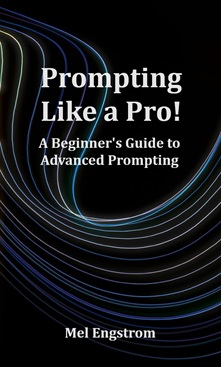The future of AI seems so promising. It can be a game-changing source of ideas for many students.
But the truth is, you’re limited in how much AI you can use when you submit assignments. Especially since your instructors have the secret weapon of plagiarism detection software TurnItIn.
Let’s get into how this all works. And, rest assured, I will explain this tech stuff in simple, plain spoken English. You won’t need a computer science degree to understand what I’m going to say. Let’s go.
What AI detection TurnItIn uses, Secret #1: Algorithm-Based Detection
- Natural Language Processing (NLP) In order to understand what AI detection TurnItIn uses know this: It understands the whole of a piece of writing by understanding the various parts that go into a writing assignment.
TurnItIn’s algorithms are great at analyzing the sentence structure, vocabulary, and coherence of submitted content. The software flags potential AI-generated text, in part, by identifying unnatural patterns (like weird speech) and any parts of your assignment that are inconsistent with the whole. - Machine Learning Models: These models are trained on vast datasets of human-written and AI-generated text. By recognizing differences between the data it already has, they’ve learned to accurately distinguish between human and AI content.
- Pattern Recognition: The software looks for repetitive phrases, unnatural fluency, or a lack of diversity in the text. Basically: It’s about flow. A piece of AI writing doesn’t seem to include normal variations in flow and tone that a human would employ. These patterns can be indicative of AI-generated content.
What AI detection TurnItIn uses, Secret #2: Human Expert Review
While algorithms provide a strong foundation for AI detection, human expertise is also essential.
TurnItIn employs a team of human reviewers who manually examine flagged submissions.
These experts bring their knowledge of specific fields and writing styles to the table, allowing them to identify subtle inconsistencies that algorithms might miss.
Challenges and Limitations
- Evolving AI Capabilities: As AI models continue to improve, detecting AI-generated content becomes increasingly difficult. TurnItIn must constantly update its algorithms to stay ahead of the curve.
- Avoiding False Positives: One of the biggest challenges is ensuring that human-written content is not mistakenly flagged as AI-generated. False positives can have serious consequences for students and educators.
- Detecting Sophisticated AI-Generated Text: Some AI models are capable of producing highly human-like text, making it challenging to distinguish from genuine human writing.
Future Directions
- Advanced Algorithms: TurnItIn is continually investing in research and development to create even more sophisticated AI detection algorithms.
- Real-Time Detection: The goal is to implement real-time analysis, allowing for immediate feedback on submitted content and preventing AI-generated text from being accepted.
- Collaboration with AI Developers: Working closely with AI developers can help ensure that future AI models are designed to be more transparent and detectable.
How much AI can a student get away with using in their assignments if TurnItIn is used to detect AI?
The short answer is: it depends.
While TurnItIn is a powerful tool for detecting AI-generated content, it’s not perfect. The amount of AI a student can get away with using will depend on several factors, including:
- The sophistication of the AI: More advanced AI models can produce text that is more difficult to detect.
- The quality of the AI-generated content: If the AI-generated content is poorly written or contains errors, it is more likely to be flagged by TurnItIn.
- The instructor’s awareness and use of TurnItIn: If an instructor is familiar with the tool and knows how to use it effectively, they may be able to detect AI-generated content even if it is more sophisticated.
- The specific assignment requirements: Some assignments may be more susceptible to AI-generated content than others. For example, assignments that require creative thinking or original research may be less likely to be flagged by TurnItIn.
It’s important to note that using AI to generate assignments without proper attribution is considered academic dishonesty. Even if TurnItIn doesn’t detect the AI, it’s still unethical. If caught, students could face serious consequences, such as failing the course or being expelled from school.
The best approach is to use AI as a tool to enhance your learning, not as a substitute for your own work. If you’re struggling with a particular assignment, consider seeking help from a tutor or professor instead of relying on AI.
The Impact on Student Submissions
The introduction of TurnItIn’s AI detection system has significant implications for students and educators alike. For students, it reinforces the importance of original thought and honest academic practices.
Knowing that their submissions will be scrutinized for AI-generated content, students are more likely to put in the effort to produce high-quality, original work.
Still…
You may be tempted to argue that AI writing is still a form of writing and that students should be allowed the ability to turn to AI as a writing tool. And you would be right.
If we’re looking into the distant future, academic institutions may be interested in considering AI as an extension of the human brain.
But that day is not today. Unfortunately.
I’d like to point out that AI is still a great resource for research.
Perplexity AI can answer a lot of questions you have as you draft your student submission and it will also provide links to where the AI got the information which you can use to pad out the reference sections of your essays.
And if you’d like to know more about how AI can be used in your writing assignments you can view my how-to articles here.
For those struggling…
Essay writing can be one of the most difficult assignments you get in your time at school, so I don’t want to leave you hanging. As a former writing tutor at my college I have some recommendations:
If you’re already in college, please look into your college tutoring center for some free tutoring.
And if you’re still in High School or Middle School you can still do something for your writing: read it out loud. You’ll detect weird grammar and inconsistencies. That’ll boost your grade some points. I know that for a fact.
And writing with AI is fun, so if you’re interested in it, please explore the wonders of ChatGPT or Gemini. You may end up loving it.
Best of luck to you.
Love,


